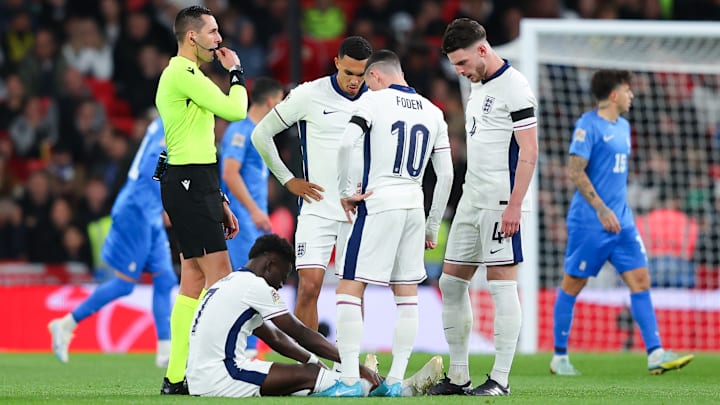Soccer injuries have been a concern, but the 2023/24 season has really reached new heights. According to a recent study by Howden, European soccer clubs are spending an astonishing €732 million-more than $4.4 billion-paying salaries to injured players from the Premier League, LaLiga, Bundesliga, Serie A, and Ligue 1. This enormous sum shows a worrying scenario, not only for now, but also for the future of soccer.
Follow Playing for 90 on X (Twitter).
Cost of Injuries: It's Not About Money; It's About Management
This salient number shows how club budgets are being stretched due to the albatross of injury hanging over club rosters. When the top-tier player is sidelined, the impact goes beyond losses that are merely games. It does not lie in finding only a capable replacement, but there is the need to adjust tactics, change strategies, and replace talent often only found in the world's most expensive players.
Take Borussia Mönchengladbach, who topped the table with 101 injuries last season, while Darmstadt sustained an injury every 33 minutes. These figures definitely show that something more serious is at hand, and that is simply that players are being taken to the limit in a calendar that gets tighter with each passing year.
Pressure of Fixtures: The Actual Baddie?
The head of sport at Howden, James Burrows, has directly pointed to a schedule congestion that he feels is one of the causal factors: "We point to the ever-increasing congestion of both domestic and international competition, forcing players to play more and more matches, increasing their chances of falling injured more often and seriously.
And he has a point. Put in the face of a 4% rise in injury frequency compared to the previous season, 2022/23, plus another 5% increase in associated cost on top, one thing is for sure: something's got to give. The physical and mental load being asked of these athletes is becoming increasingly unsustainable, and slowly but surely, the clubs are feeling the pinch-quite literally.
The Premier League was the worst casualty financially, paying out a staggering €318.8 million ($1.9 billion) in salaries to injured players. This total amounts to 44% of the total amount spent by the top five European leagues. The question then arises: how much longer can the clubs absorb this cost before something gives way?

FIFPro vs. FIFA: An Ongoing Battle
In this crisis, the intervention of the global players' union, FIFPro, went as far as to accuse FIFA of abusing the international calendar. The tension between the world's soccer governing body and the organization entrusted with the rights of players reflects the reality of today's game.
They are on opposing sides of an argument that touches player health, club finances and fan entertainment. On one side, FIFA is increasing the number of tournaments and competitions as it seeks to grow soccer's global reach. On the other, FIFPro claims players are being taken to their physical and mental limits - the consequences there for all to see.
This has brought sharp questions about FIFA's accountability regarding the health of players. The continued expansion of competitions, along with burgeoning fixture lists that allow minimal recovery time, is combining to have a devastating impact that is pushing injuries at all levels to unsustainable levels.
Bundesliga: The Injury Hotspot
The Bundesliga accounted for the highest amount of injuries with 1,255 incidents last season. That is 30% of all injuries across the top five European leagues. The Premier League may have taken the lead in terms of costs, but Bundesliga truly felt the physical strain most directly.
Clubs like Borussia Mönchengladbach and Darmstadt have been particularly badly affected and serve as prime examples of how chaos can take over when injuries assail the team. Every injury upsets the dynamics of a particular team, putting at risk the progress of an entire season.
It would appear that the Bundesliga is losing out in the battle of player fatigue. The efficacy of physical conditioning, squad management, and - again - the structure of the competitive calendar must be questioned. This increase in the number of injuries is related not just to the number of games but also to the intensity at which these games are being played.
How Does European Soccer Find Itself in this Predicament?
The cost of these injuries is skyrocketing, and it is hard to fathom exactly how European soccer found itself in this position. In recent years, spending on top-flight talent has exploded. Clubs can spend millions on transfers and salaries, hopefully securing them the best players. But with a rise in stakes, expectations and pressure go up on these athletes to perform at every level.
What was not expected, however, was the increasing amount of injuries. According to a study done by Howden, while the cost of injuries reached an all-time high in 2023/24, the growth rate in injury frequency had been the slowest in years. That means whereas clubs may be awake to the problem, they have not quite found ways of trying to put it to rest.
